桔霉素,Citrinin,分析标准品,≥99%(HPLC)
产品编号:西域质检-TM20578| CAS NO:518-75-2| 分子式:C13H14O5| 分子量:250.25
Citrinin 是一种引起食品污染的真菌毒素,具有不同的毒性作用。Citrinin 通常与另一种肾毒性真菌毒素 Ochratoxin A 一起发现。Citrinin 据报道在体外具有广泛的生物活性,包括抗菌、抗真菌和潜在的抗癌和神经保护作用。
本网站销售的所有产品仅用于工业应用或者科学研究等非医疗目的,不可用于人类或动物的临床诊断或者治疗,非药用,非食用,
桔霉素
本标准物质的研制、生产和定值依据ISO/IEC 17025, ISO 17034和ISO 9001质量认证管理体系。 主要用于确保质量控制过程中样品测试的量值准确性,亦可用于测量仪器校准、分析方法确认与评价、操作人员水平考核等。
桔霉素在适宜培养基产生并经制备液相分离纯化得到,样品纯度初检合格后,分装到洁净的棕色玻璃瓶中。
桔霉素,英文名称:Citrinin,分子式:C13H14O5,分子量:250.25,CAS No.:518-75-2
本标准物质以配制值作为标准值,通过使用满足计量学特性要求的制备方法,测量方法和计量器具,保证标准物质的量值溯源性。
| 编号 | 名称 | 浓度(%) | 相对扩展不确定度(%)(k=2) |
| 714182-1mg | 桔霉素 | 99.1 | 0.9 |
标准值的不确定度综合考虑了原料纯度定值结果,制备过程,量值核验以及均匀性,稳定性等引入的不确定度分量。
依据JJF1343-2022《标准物质的定值及均匀性、稳定性评估》,对分装后的样品进行随机抽样,对溶液浓度进行均匀性检验,稳定性考察。结果表明,本标准物质均匀性,稳定性良好。
本标准物质量值自定值日期起,有效期33个月, 研制单位将继续跟踪监测该标准物质的稳定性,有效期内如发现量值变化,将及时通知用户。
1、包装: 本固体纯度标准物质采用棕色玻璃瓶包装,1mg/瓶。
2、贮存:运输时应避免挤压,碰撞;常温(20±5)℃,置于阴凉处贮存。
3、使用:使用前,将样品放在干燥器中干燥2小时,平衡至室温后再进行使用。
本溶液物质属于有毒有害物质,在操作过程中请戴口罩、手套在通风橱中操作,避免吸入或皮肤接触。本标准物质仅限实验室使用,不可食用。
相关文档
化学品安全说明书(MSDS)
下载MSDS质检证书(COA)
相关产品
| 符号 |
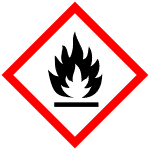

GHS02, GHS07 |
|---|---|
| 信号词 | Danger |
| 危害声明 | H225-H302-H312-H319-H332 |
| 警示性声明 | P210-P280-P305 + P351 + P338 |
| 个人防护装备 | Eyeshields;Faceshields;full-face particle respirator type N100 (US);Gloves;respirator cartridge type N100 (US);type P1 (EN143) respirator filter;type P3 (EN 143) respirator cartridges |
| 危害码 (欧洲) | T |
| 风险声明 (欧洲) | 23/24/25-40-36/37/38 |
| 安全声明 (欧洲) | S26-S36/37/39-S45 |
| 危险品运输编码 | UN 3462 6.1/PG 3 |
| WGK德国 | 3 |
| RTECS号 | DJ2275000 |
| 包装等级 | II |
| 危险类别 | 6.1(a) |
Synonym:None Section 2 - COMPOSITION, INFORMATION ON INGREDIENTS
Risk Phrases: 23/24/25 Section 3 - HAZARDS IDENTIFICATION EMERGENCY OVERVIEW
Toxic by inhalation, in contact with skin and if swallowed.Cancer suspect agent.The toxicological properties of this material have not been fully investigated. Potential Health Effects Eye: May cause eye irritation. Skin: May cause skin irritation. Harmful if absorbed through the skin. Ingestion: Harmful if swallowed. May cause irritation of the digestive tract. The toxicological properties of this substance have not been fully investigated. Inhalation: Harmful if inhaled. May cause respiratory tract irritation. The toxicological properties of this substance have not been fully investigated. Chronic: No information found. Section 4 - FIRST AID MEASURES Eyes: Flush eyes with plenty of water for at least 15 minutes, occasionally lifting the upper and lower eyelids. Get medical aid. Skin: Get medical aid. Flush skin with plenty of water for at least 15 minutes while removing contaminated clothing and shoes. Wash clothing before reuse. Ingestion: Never give anything by mouth to an unconscious person. Get medical aid. Do NOT induce vomiting. If conscious and alert, rinse mouth and drink 2-4 cupfuls of milk or water. Inhalation: Remove from exposure and move to fresh air immediately. If not breathing, give artificial respiration. If breathing is difficult, give oxygen. Get medical aid. Notes to Physician: Section 5 - FIRE FIGHTING MEASURES General Information: As in any fire, wear a self-contained breathing apparatus in pressure-demand, MSHA/NIOSH (approved or equivalent), and full protective gear. During a fire, irritating and highly toxic gases may be generated by thermal decomposition or combustion. Extinguishing Media: Use agent most appropriate to extinguish fire. Use water spray, dry chemical, carbon dioxide, or appropriate foam. Section 6 - ACCIDENTAL RELEASE MEASURES General Information: Use proper personal protective equipment as indicated in Section 8. Spills/Leaks: Clean up spills immediately, observing precautions in the Protective Equipment section. Sweep up or absorb material, then place into a suitable clean, dry, closed container for disposal. Provide ventilation. Section 7 - HANDLING and STORAGE Handling: Wash thoroughly after handling. Use with adequate ventilation. Avoid contact with eyes, skin, and clothing. Keep container tightly closed. Avoid ingestion and inhalation. Storage: Store in a tightly closed container. Store in a cool, dry, well-ventilated area away from incompatible substances. Hormones and antibiotics room. Section 8 - EXPOSURE CONTROLS, PERSONAL PROTECTION Engineering Controls: Facilities storing or utilizing this material should be equipped with an eyewash facility and a safety shower. Use adequate ventilation to keep airborne concentrations low. Exposure Limits CAS# 518-75-2: Personal Protective Equipment Eyes: Wear appropriate protective eyeglasses or chemical safety goggles as described by OSHA's eye and face protection regulations in 29 CFR 1910.133 or European Standard EN166. Skin: Wear appropriate protective gloves to prevent skin exposure. Clothing: Wear appropriate protective clothing to prevent skin exposure. Respirators: A respiratory protection program that meets OSHA's 29 CFR 1910.134 and ANSI Z88.2 requirements or European Standard EN 149 must be followed whenever workplace conditions warrant respirator use. Section 9 - PHYSICAL AND CHEMICAL PROPERTIES Physical State: Crystalline powder Color: yellow Odor: Not available. pH: Not available. Vapor Pressure: Not available. Viscosity: Not available. Boiling Point: Not available. Freezing/Melting Point: Not available. Autoignition Temperature: Not available. Flash Point: Not available. Explosion Limits, lower: Not available. Explosion Limits, upper: Not available. Decomposition Temperature: Solubility in water: Specific Gravity/Density: Molecular Formula: C13H14O5 Molecular Weight: 250.25 Section 10 - STABILITY AND REACTIVITY Chemical Stability: Stability unknown. Conditions to Avoid: Incompatible materials. Incompatibilities with Other Materials: Oxidizing agents. Hazardous Decomposition Products: Irritating and toxic fumes and gases. Hazardous Polymerization: Has not been reported Section 11 - TOXICOLOGICAL INFORMATION RTECS#: CAS# 518-75-2: DJ2275000 LD50/LC50: CAS# 518-75-2: Oral, mouse: LD50 = 105 mg/kg; Oral, rabbit: LD50 = 134 mg/kg. Carcinogenicity: Citrinin - Not listed by ACGIH, IARC, or NTP. Other: See actual entry in RTECS for complete information. Section 12 - ECOLOGICAL INFORMATION Other No information available. Section 13 - DISPOSAL CONSIDERATIONS Dispose of in a manner consistent with federal, state, and local regulations. Section 14 - TRANSPORT INFORMATION IATA Shipping Name: TOXIC SOLID, ORGANIC, N.O.S.* Hazard Class: 6.1 UN Number: 2811 Packing Group: II IMO Shipping Name: TOXIC SOLID, ORGANIC, N.O.S. Hazard Class: 6.1 UN Number: 2811 Packing Group: II RID/ADR Shipping Name: TOXIC SOLID, ORGANIC, N.O.S. Hazard Class: 6.1 UN Number: 2811 Packing group: II Section 15 - REGULATORY INFORMATION European/International Regulations European Labeling in Accordance with EC Directives Hazard Symbols: T Risk Phrases: R 23/24/25 Toxic by inhalation, in contact with skin and if swallowed. Safety Phrases: S 28A After contact with skin, wash immediately with plenty of water. S 36/37/39 Wear suitable protective clothing, gloves and eye/face protection. S 37 Wear suitable gloves. S 45 In case of accident or if you feel unwell, seek medical advice immediately (show the label where possible). WGK (Water Danger/Protection) CAS# 518-75-2: No information available. Canada None of the chemicals in this product are listed on the DSL/NDSL list. CAS# 518-75-2 is not listed on Canada's Ingredient Disclosure List. US FEDERAL TSCA CAS# 518-75-2 is not listed on the TSCA inventory. It is for research and development use only. SECTION 16 - ADDITIONAL INFORMATION N/A |
|
~% 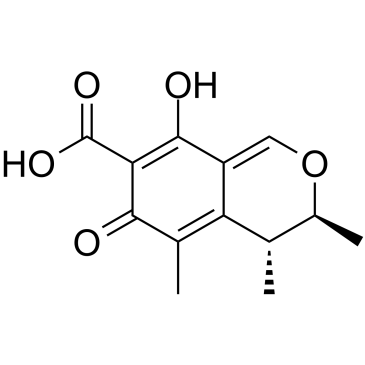
518-75-2 |
| 文献:Warren et al. Journal of the American Chemical Society, 1949 , vol. 71, p. 3422 Full Text View citing articles Show Details Schwenk; Schubert; Stahl Archives of Biochemistry, 1949 , vol. 20, p. 220,226 |
|
~% 
518-75-2 |
| 文献:Roedel, Thomas; Gerlach, Hans Liebigs Annalen, 1995 , # 5 p. 885 - 888 |

518-75-2 ~% 
518-75-2 |
| 文献:Johnson et al. Journal of the Chemical Society, 1950 , p. 2971,2973 |
|
~% 
518-75-2 |
| 文献:Asano et al. Yakugaku Zasshi, 1951 , vol. 71, p. 268,270 Chem.Abstr., 1952 , p. 485 |
|
~% 
518-75-2 |
| 文献:Cartwright; Robertson; Whalley Journal of the Chemical Society, 1949 , p. 1563,1566 |
|
~% 
518-75-2 |
| 文献:Wang; Ting Science Record (Peking), 1951 , vol. 4, p. 269,270 |
|
~% 
518-75-2 |
| 文献:Cartwright; Robertson; Whalley Journal of the Chemical Society, 1949 , p. 1563,1566 |
- 5. Zhen, Z.; Xiong, X.; Liu, Y.; Zhang, J.; Wang, S.; Li, L.; Gao, M. NaCl Inhibits Citrinin and Stimulates Monascus Pigments and Monacolin K Production. Toxins 2019, 11, 118. https://doi.org/10.3390/toxins11020118
- 4. Xiong, Xiaoqian, et al. "Low‐Frequency Magnetic Field of Appropriate Strengths Changed Secondary Metabolite Production and Na+ Concentration of Intracellular and Extracellular Monascus purpureus." Bioelectromagnetics 41.4 (2020): 289-297.https://doi.org/10
- 3. 胡佳莉. 红曲黄精发酵工艺及免疫调节和降血脂作用研究[D].广东药科大学,2020.
- 2. 周珂, 严鹏程, 胡永丹. 高产橙黄色素低产桔霉素红曲菌的液态发酵条件优化[J]. 食品与发酵工业, 2020, 046(007):116-122.
- 1. 庄晓晓 王钰 李阔阔 等. 低产桔霉素红曲霉复合诱变育种[J]. 生物学杂志 2018 35(001):104-106 124.




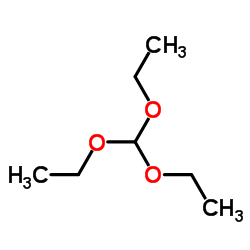

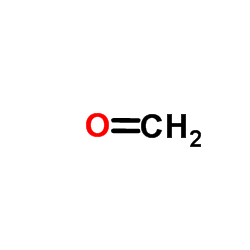
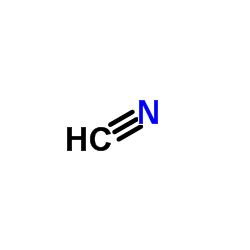
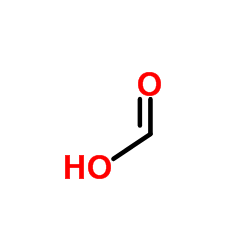





 浙公网安备 33010802013016号
浙公网安备 33010802013016号